Whether you’re car camping in summer or snowshoeing into the backcountry, your sleeping bag is one of the most essential pieces of gear. But with so many options—down vs synthetic fill, mummy vs rectangular, comfort vs survival ratings—how do you choose the right one?
This guide will walk you through everything you need to know, including how sleeping bags are rated, what shapes work best, how insulation types affect performance, and which models to consider for your next trip.
Table of Contents
What to Consider When Choosing a Sleeping Bag
The right sleeping bag isn’t just about staying warm—it’s about staying comfortable in your conditions, sleeping well in your body, and packing efficiently for your style of adventure. Before diving into specs, ask yourself the following:
What Type of Camping Do You Do?
Car Camping: Weight and packed size matter less, so go big on comfort. Look for rectangular bags like the Rab Outpost 700, or doubles like The North Face Dolomite One Double.
Backpacking: Here, weight and compressibility matter most. Mummy-style sleeping bags with down insulation, such as the The North Face Trail Lite Down Sleeping Bag -7°C, are ideal.
Cold-Weather Expeditions: Prioritize warmth-to-weight ratio and a low EN Limit Rating. Consider options like the Rab Ascent Pro 800 (-15°C) or Big Agnes Torchlight EXP 20 °.
What Temperatures Will You Face?
Most sleeping bags are rated for a comfort or limit temperature, typically listed in °C or °F. The EN Limit rating (or ISO Limit) refers to the lowest temperature at which a “standard male” sleeper stays warm in a curled position—helpful for comparing bags across brands. We’ll break this down further in Section 4, but in short:
Summer: 32°F / 0°C and up
3-Season: 20–32°F / –6 to 0°C
Winter: Below 20°F / –7°C
Don’t just shop for the lowest number—match the bag to the average nighttime low, not the daytime high.
Do You Sleep Cold or Hot?
This one matters more than you’d think. If you tend to run cold, look for a bag with a slightly lower rating than your expected conditions. Consider features like a draft collar or snugger fit for better heat retention.
For warm sleepers, a bag with ventilated zippers or modular layering (like The North Face One Bag) can prevent overheating.
What’s More Important: Packability or Plushness?
Down bags compress smaller and weigh less—ideal for long treks. But synthetic sleeping bags perform better in wet conditions and are usually more affordable. If you’re camping somewhere humid, that may sway your decision (we’ll explore this more in the next section).
How Do You Sleep?
Side sleeper? Back sleeper? Sprawl out like a starfish? Look for bags that match your movement:
Mummy bags: Efficient but tight-fitting
Semi-rectangular bags or spoon-shaped bags: Offer more room to shift
Double bags: Ideal for couples or those who hate being confined
The NEMO Equipment Forte 20 and Big Agnes Sidewinder SL 20°F are great examples of comfort-forward designs for restless or side sleepers.
Size Does Matters
Sleeping bags aren’t one-size-fits-all. Choosing the right length ensures better thermal efficiency and comfort. Here’s a quick guide to standard sizing by gender:
| Gender | Small | Standard | Long |
|---|---|---|---|
| Unisex | 5’6″ | 6′ | 6’6″ |
| Men | 5’6″ | 6′ | 6’6″ |
| Women | 5′ | 5’5″ | 6′ |
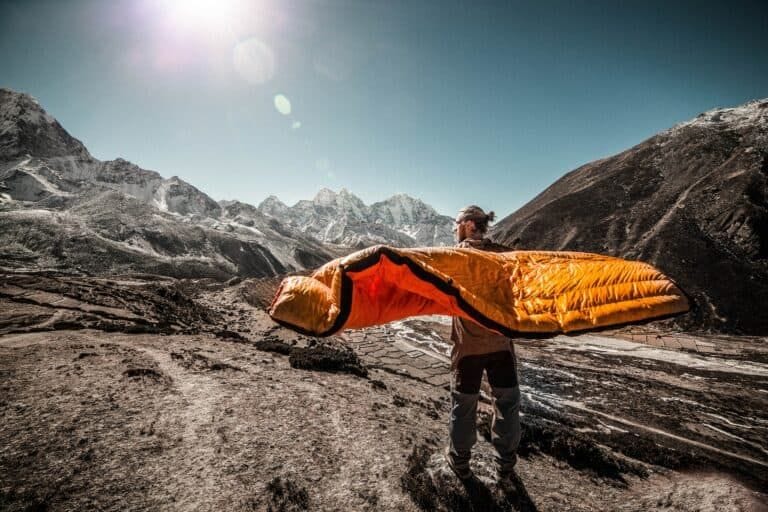
Types of Sleeping Bags
Understanding sleeping bag types helps narrow your options before you start comparing specs. The main differences come down to shape, insulation type, and intended temperature range.
Mummy Sleeping Bags
These are the most thermally efficient. Tapered at the feet with a snug hood, mummy bags reduce dead air space and retain body heat. They’re the best cold-weather camping and backpacking sleeping bags.
Pros: Lightweight, compact, warmest per gram
Cons: Restrictive for broad or restless sleepers
Example: Rab Ascent Pro 800 – A high-loft winter sleeping bag with a –15°C limit rating and responsibly sourced down.
Rectangular Sleeping Bags
These are your classic, blanket-style bags—roomy and great for warm-weather car camping or cabin stays.
Pros: Spacious, comfortable, easy to unzip and use as a quilt
Cons: Poor heat retention, bulky when packed
Example: Rab Outpost 700 – Ideal for recreational and user-friendly year-round camping.
Semi-Rectangular or Tapered Bags
A hybrid shape offering better warmth than a rectangle, but more wiggle room than a mummy. These are great for 3-season campers who want a balance between comfort and performance.
Pros: Versatile, reasonably warm, more room to move
Cons: Not as thermally efficient as mummy bags
Example: Big Agnes Sidewinder SL 20 – Spoon-shaped with body-mapped insulation for side sleepers.
Double Sleeping Bags
Ideal for couples or those who simply hate being confined. These are usually rectangular and heavy, designed for car camping or home use.
Pros: Great for cuddling, can unzip into two bags or blankets
Cons: Heavy and bulky
Example: The North Face Dolomite One Double – Uses a patented 3-in-1 sleep system that can be customized for two-person comfort in any conditions.
Women’s & Kids’ Sleeping Bags
These aren’t just about color and marketing—they’re designed for different body proportions and temperature needs.
Women’s sleeping bags: Often include extra insulation in the torso and footbox, plus a narrower shoulder area.
Kids’ sleeping bags: Shorter in length for better thermal performance, sometimes with “grow zones” for adjustability.
Example: NEMO Tempo -7 °C (Women’s) – Contoured for comfort and warmth, with synthetic fill for damp climates.
Common Sleeping Bag Shapes
Shape | Description | Best For |
Mummy Sleeping Bags | Tapered cut, narrow at the feet, snug around the body | Cold conditions, weight-conscious trips |
Rectangular Sleeping Bags | Boxy and spacious, allows more movement | Car camping, warm weather |
Semi-Rectangular Sleeping Bags | A hybrid shape—more room than mummy, less bulk than rectangular | All-around use, casual backpacking |
Double Sleeping Bags | Fits two sleepers—often zips apart into two singles | Couples, families, van life |
Women-Specific Sleeping Bags | Shorter, narrower at the shoulders, wider at the hips; extra insulation in key zones | Better warmth and fit for most women |
Our Top Picks
Down vs. Synthetic Fill Insulation
Choosing between down and synthetic insulation is one of the most important decisions when selecting a sleeping bag. Each has distinct advantages depending on your priorities: weight, warmth, budget, and climate.
Down Fill Insulation: Lightweight & Compressible
Down sleeping bags are filled with the lofty under-feathers of ducks or geese, denoted by fill-power. Their main strengths are:
Excellent warmth-to-weight ratio
Highly compressible for backpacking
Long-lasting with proper care
The tradeoff? Down bags tend to be more expensive and can lose insulating power when wet—though many modern bags use water-resistant treatments or shells to counter this. For example, the Rab Outpost 700 offers –5 °C comfort and packs down impressively for multi-day hikes.
Best for: Cold, dry conditions; backpacking; space-saving
Synthetic Insulation: Reliable in Wet Conditions
Synthetic bags use engineered polyester fibers that mimic the loft and warmth of down—though typically at a heavier weight.
Retains warmth when wet
Dries quickly
Often more affordable
They’re often the go-to choice for wetter climates, new campers, or those on a tighter budget. The NEMO Forte Endless Promise 20 is a solid 3-season synthetic sleeping bag with thoughtful design features for comfort and sustainability.
Best for: Damp conditions; casual camping; affordability
Quick Comparison
Feature | Down | Synthetic |
Warmth-to-weight | Excellent | Moderate |
Compressibility | High | Lower |
Performance when wet | Poor (unless treated) | Good |
Durability | Long-lasting | Shorter lifespan |
Price | Higher | More affordable |
Expert Insight: “Most people overestimate how warm a bag they need—and underestimate how much insulation degrades over time. Whether you’re choosing down or synthetic, match the fill to your use case, not just the forecast.”
— Oliver Rind, Marketing Specialist, Altitude Sports
Our Top Picks
Understanding Temperature Ratings
Sleeping bag temperature ratings can be confusing—but they’re essential for comfort and safety in the outdoors. Here’s how to make sense of them.
Comfort vs. Limit vs. Extreme
Most sleeping bags use the EN (European Norm) 13537 or ISO standard, which includes three key ratings:
Comfort Rating: The temperature at which a “cold sleeper” (typically female) can sleep comfortably.
Limit Rating: The temperature at which a “warm sleeper” (typically male) remains comfortable.
Extreme Rating: The minimum survival temperature—not recommended for regular use.
For example, a bag rated 20°F / –6°C (Limit) means it’s suitable for typical 3-season use, especially if you’re a warm sleeper or wearing thermals.
How to Choose the Right Temperature Rating
Always consider the overnight low, not daytime high.
Factor in your sleep style: cold sleeper? Add 5–10 degrees.
Account for gear degradation—older bags may not insulate as well.
Think about layering: wearing base layers or using sleeping bag liners can extend a bag’s range.
General Temperature Ranges
Season | Temperature Rating |
Summer | 32°F / 0°C and above |
3-Season | 20–32°F / –6 to 0°C |
Winter | Below 20°F / –7°C |
Pro Tip: If in doubt, err slightly warmer—you can always vent the bag or use a lighter liner. But if you’re too cold, there’s no easy fix at 2 a.m. Luckily, for very little extra cost and even littler extra weight, you can pack an emergency sleeping bag liner for extra warmth when it counts.
Must-Have Features & Nice-to-Haves
The best sleeping bags balance warmth, comfort, and practicality. While your core needs depend on your activity and environment, certain features make a big difference in real-world conditions. Below, we break them into must-haves and bonus features worth considering.
Must-Have Features
Feature | Why It Matters |
Hood & Draft Collar | Traps heat around your head and neck—the #1 place for heat loss at night. |
Zipper Baffles | Insulated tubes that prevent cold air from sneaking through the zipper track. |
Insulation Lofts Evenly | Keeps you warm throughout the bag without cold spots. |
Durable Shell Fabric | Ripstop nylon or polyester resists abrasion, moisture, and rough terrain. |
Compression Sack | A stuff sack helps pack the bag down small for easy transport. |
EN/ISO Temperature Sleeping Bag Rating | Offers a standardized measure of warmth so you can compare bags confidently. |
Nice-to-Haves
Feature | Why It’s Helpful |
Two-Way Zippers | Vent from the top or bottom to regulate temperature easily. |
Pillow Pocket | A sleeve that holds clothing or a camp pillow in place—no more runaway heads. |
Stash Pocket | Keep essentials (like a headlamp or earplugs) within reach. |
Pad Sleeves or Grips | Prevents your sleeping pad from sliding out underneath you at night. |
Modular Layering | Systems like The North Face’s One Bag let you add/remove layers as needed. |
Expert Insight: “The truth is, your sleeping bag isn’t just gear—it’s your last line of defense between comfort and a miserable night. You don’t need the fanciest bag on the market, but you do need the right one for your use case. Think about how you actually camp—how you sleep, where you go, who you’re with. That’s the difference between a piece of equipment and a piece of peace.”
— Chafic L.E., Backcountry Consultant at Altitude Sports
Care, Storage & Longevity Tips
A quality sleeping bag can last a decade or more—but only if you treat it right. Whether it’s down or synthetic, proper maintenance ensures warmth, comfort, and performance, offering a comfortable night’s sleep, trip after trip.
During Your Trip
Use sleeping bag liners: It keeps your bag cleaner for longer and adds a touch of warmth. A good liner is easier to wash than your bag.
Keep it dry: Even water-resistant bags can lose loft when soaked. Air it out each morning and use a dry sack when packing.
Avoid direct ground contact: Use a pad or groundsheet underneath to prevent dirt, abrasion, and moisture seepage.
Post-Trip Cleaning
Spot clean first: Use a damp cloth and mild soap for small stains.
Full wash sparingly: Follow the care label—usually a front-loading washer with a gentle detergent (or specific down wash if applicable). Avoid fabric softener.
Dry thoroughly: Use low heat with clean tennis balls in the dryer to help restore loft. Be patient—this can take several hours.
Long-Term Storage
Never store it compressed.
Stuff sacks are for the trail, not the off-season. At home, hang your bag or store it loosely in a breathable cotton or mesh sack to preserve loft and fabric integrity.
Repairs & Refreshing
Repair small tears with gear patches or seam tape to stop fraying.
Restore water resistance with DWR treatment if the shell starts absorbing water.
Pro Tip: If your bag has lost its loft over time, a gentle wash and proper drying can bring back some of that bounce—especially with down.
With proper care, your sleeping bag becomes a trusted companion, not just another piece of gear. Take the time to treat it well, and it’ll return the favour night after night.
editor's choice
The Cat’s Meow Eco is a versatile 20-degree bag with a water-repellent finish, recycled shell fabric and a fully insulated hood. This updated design includes integrated shock cords that prevent sleeping pads from wandering during the night.
Price: 0.00$
Brand Name | Product Type
Brand Name | Product Type
The Cat’s Meow Eco is a versatile 20-degree bag with a water-repellent finish, recycled shell fabric and a fully insulated hood. This updated design includes integrated shock cords that prevent sleeping pads from wandering during the night.
Price: 0.00$
Sleeping Bag FAQ
What temperature sleeping bag should I get?
Choose a sleeping bag based on the lowest temperatures you expect to encounter—not daytime highs. For summer camping, bags rated around 0°C (32°F) work well. For shoulder seasons, aim for –6°C to 0°C (20–32°F). Winter campers need bags rated below –7°C (20°F). Look for EN/ISO ratings where possible for more accurate comparisons.
What’s better for camping—down or synthetic sleeping bags?
Down is lighter and more compressible, making it ideal for backpacking. However, synthetic insulation performs better in wet conditions and usually costs less. If weight matters, go down. If reliability and value matter, synthetic is a solid choice.
Do I need a special sleeping bag for side sleeping?
Yes—if you’re a side sleeper, look for bags labeled as “spoon-shaped” or “side-sleeper-friendly.” These are wider at the hips and knees to accommodate movement. Examples include the Big Agnes Sidewinder SL 20 or NEMO Forte 20.
Can two people share a sleeping bag?
Absolutely. Double sleeping bags like The North Face Dolomite One Double are designed for two-person camping comfort. They’re heavier, but ideal for car camping or family trips where weight isn’t an issue.
Final Thoughts
Choosing the right sleeping bag isn’t just about comfort—it’s about safety, warmth, and making sure every night under the stars is a good one. By understanding insulation types, temperature ratings, sizing, and key features, you can confidently pick the best bag for your adventures—whether you’re chasing alpine sunrises or camping with the kids.
Still unsure? Browse our Best Sleeping Bag roundup for real-world-tested picks trusted by our outdoor experts. Or, learn how to select the best sleeping pad to match your sleeping bag.
Sleep well, travel far.




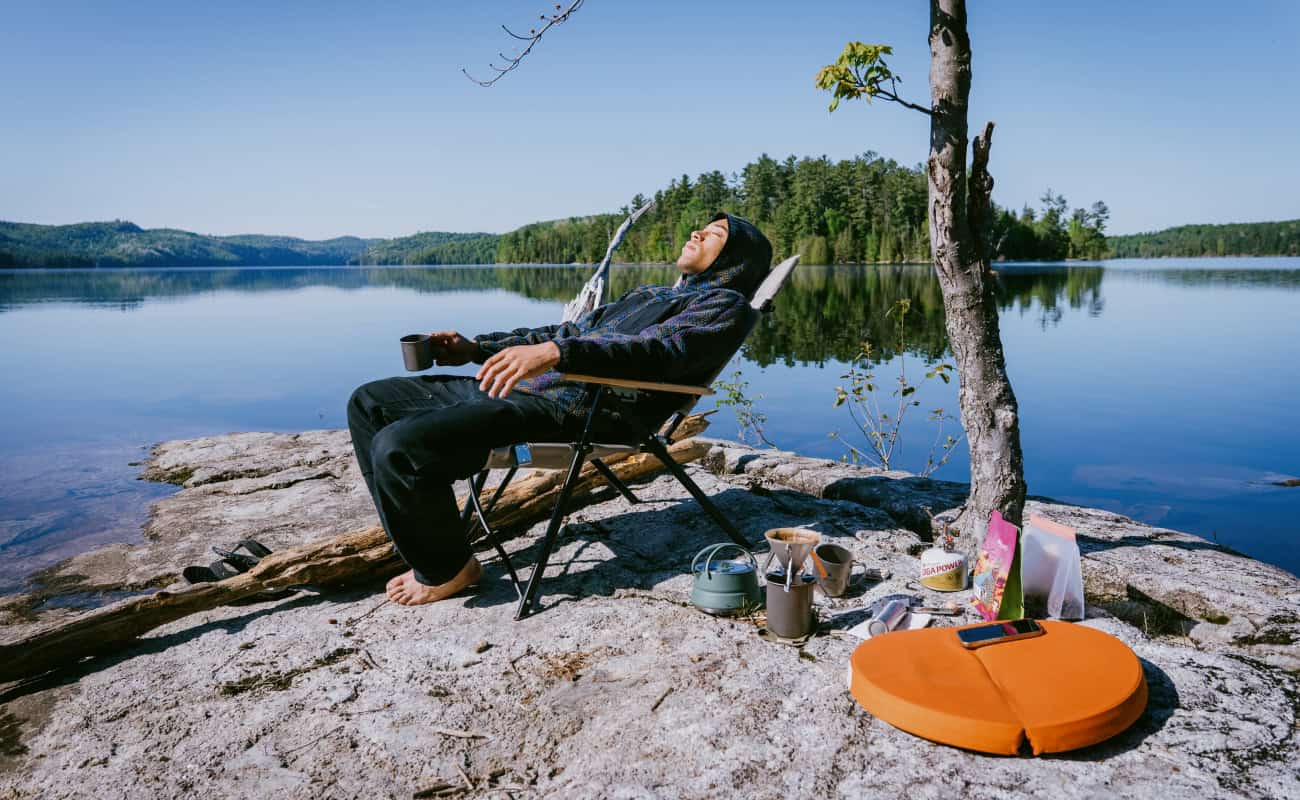
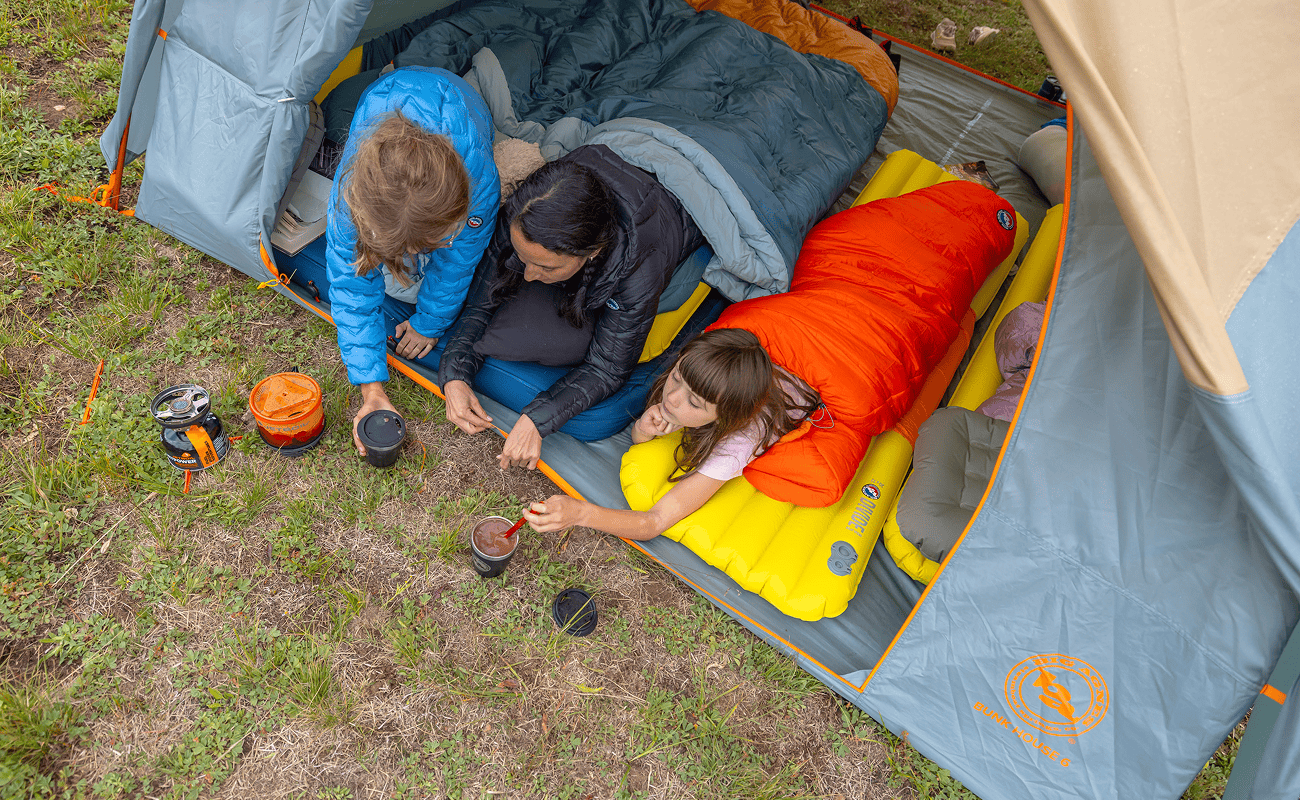

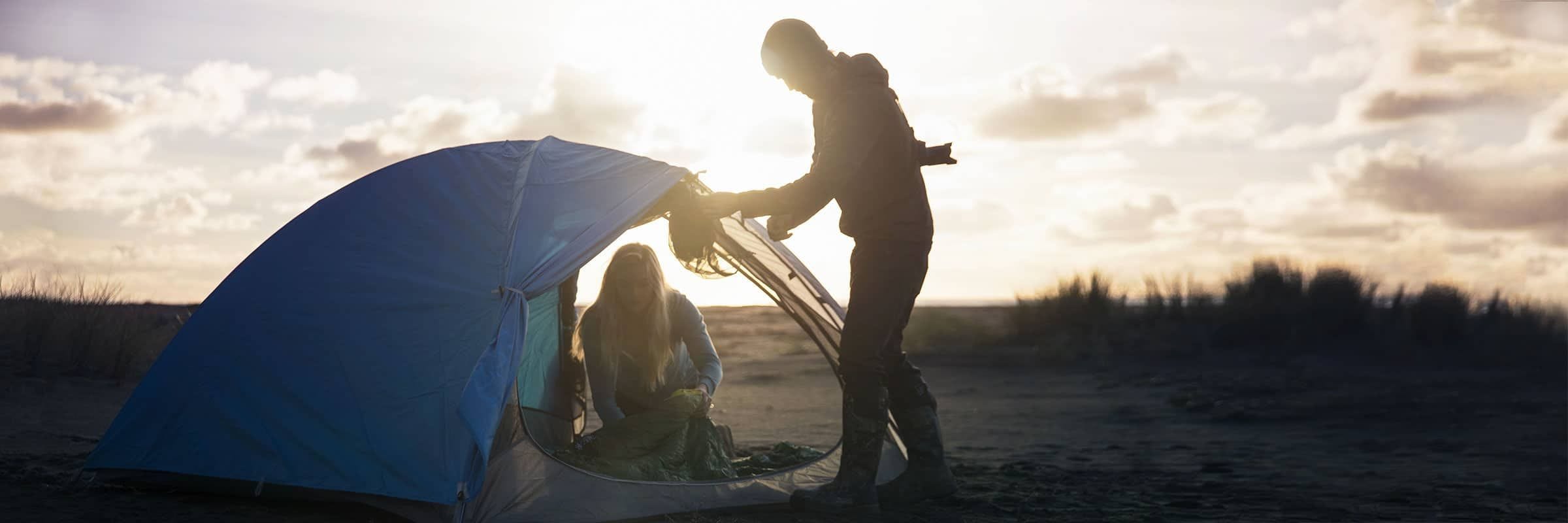
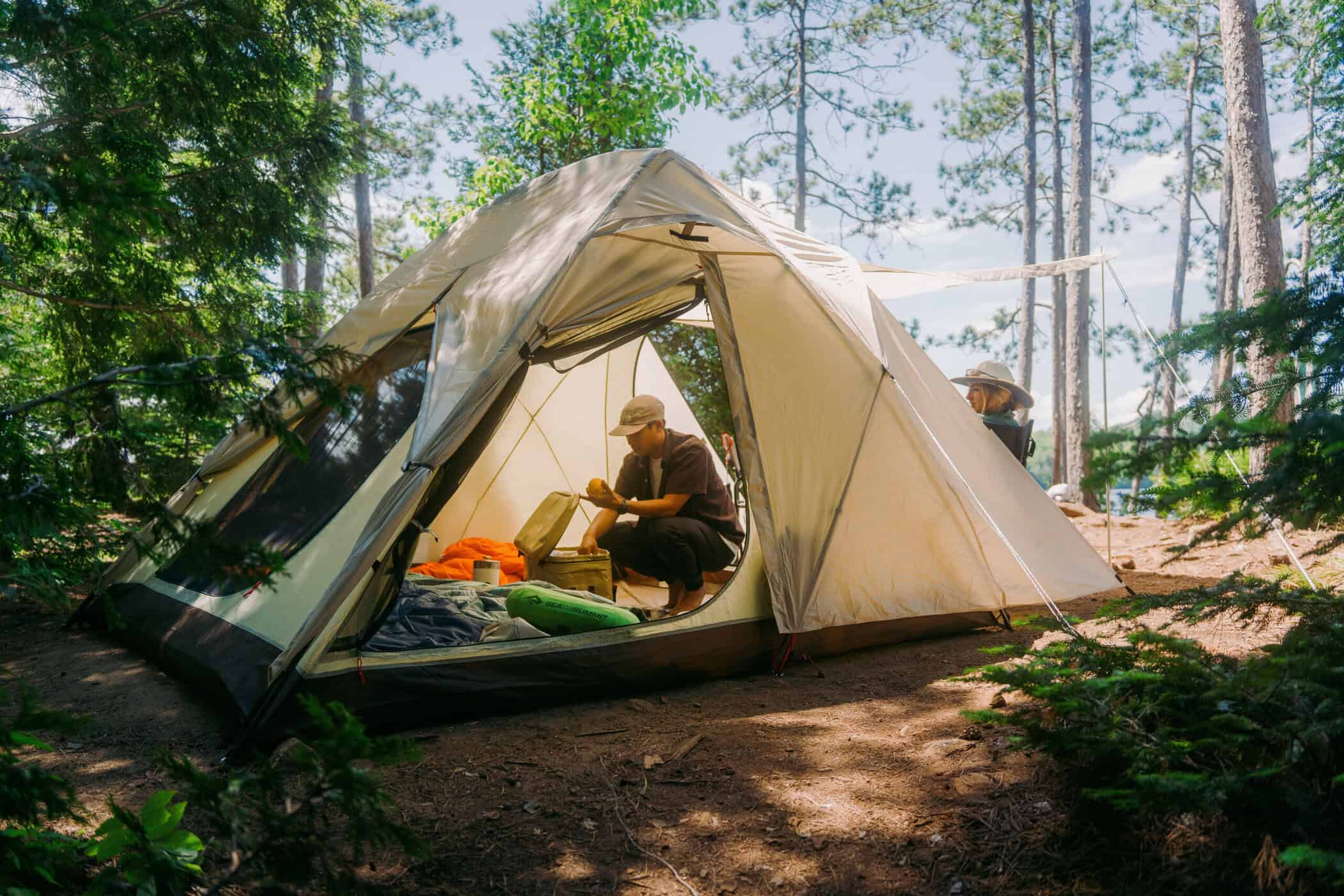
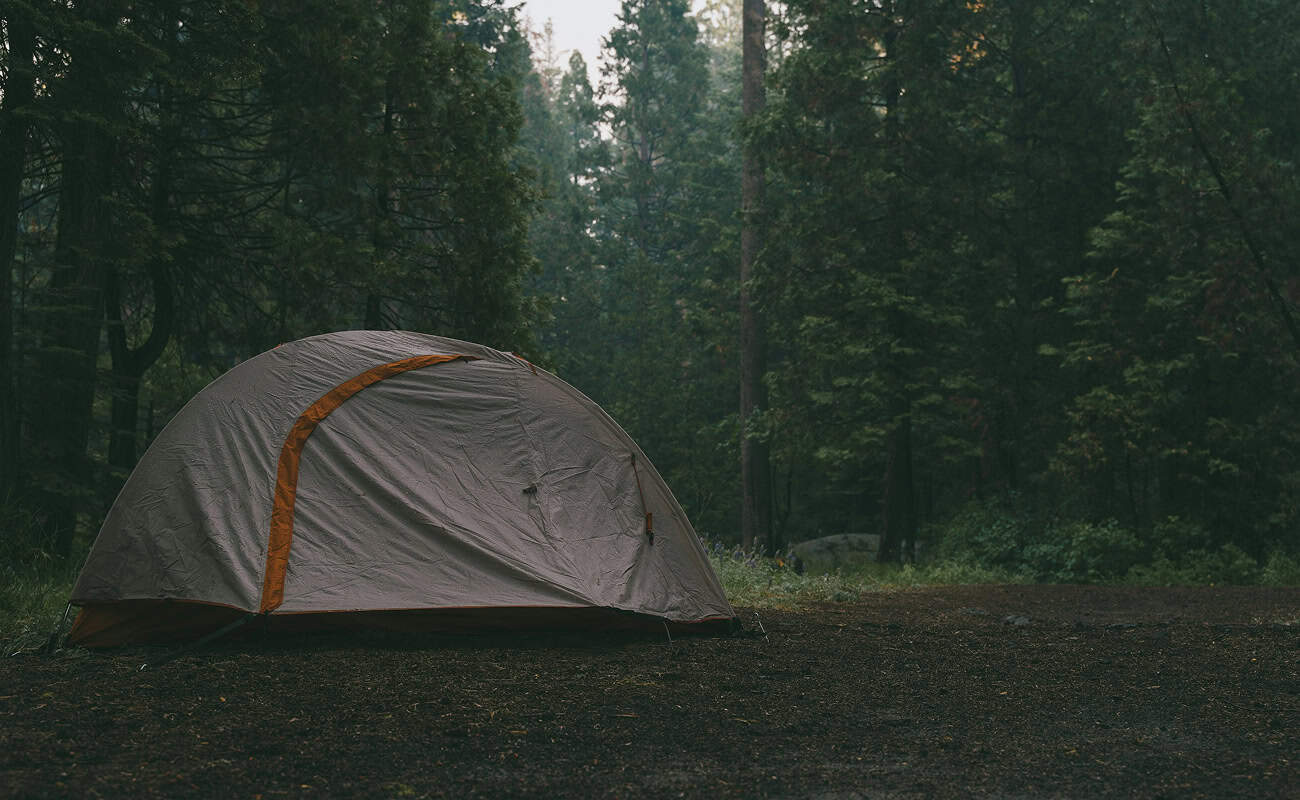
tricia marie
April 3rd 2019